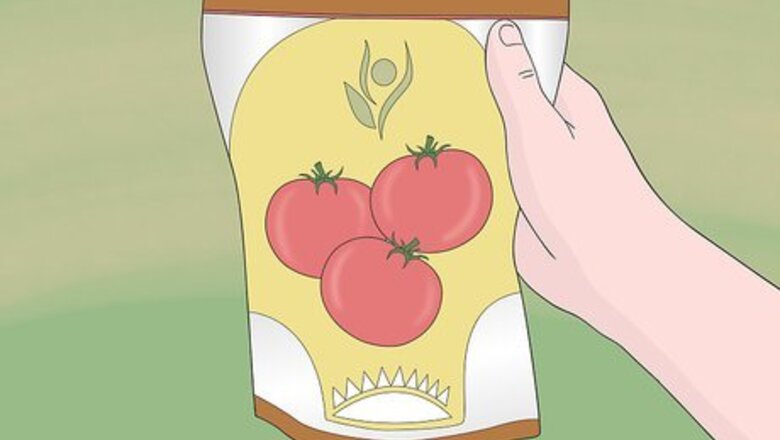
views
Starting Your Seeds
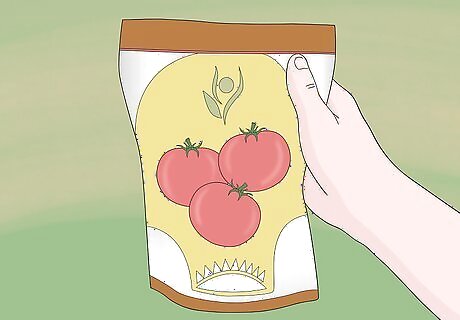
Buy seeds or choose seeds from a tomato. You can buy seeds online at seed exchange sites, from your local nursery, or from other gardeners. You can also buy seeds from the garden section of a department store. If you want to collect seeds from a plant, then you will need at least one tomato from that plant. Make sure the tomato is from a plant that was grown from an heirloom or open pollinated seed. If you choose tomatoes from a hybrid, or a plant with chemically-treated seeds, the results may not be as impressive. A tomato plant may be categorized by: Heirloom or Hybrid: Heirlooms are tomatoes that have been genetically reproduced for several generations without any cross-breeding. Essentially, they're pure-bred tomatoes. Hybrid tomatoes are a cross between two varieties. Determinate or Indeterminate: This method of classification describes the length of time for which a plant produces fruit. Determinate plants produce for a few weeks, while indeterminate plants produce fruit throughout an entire growing season until climate conditions become too cold. Indeterminate plants also grow larger and require more care in terms of pruning and staking. Shape: Tomatoes are also classified into four categories of shape: globe, beefsteak, paste, and cherry. Globe is the most popular shape, beefsteak is the largest, paste tomatoes are used to make sauces, and cherry tomatoes are small, bite-sized tomatoes often used in salads.
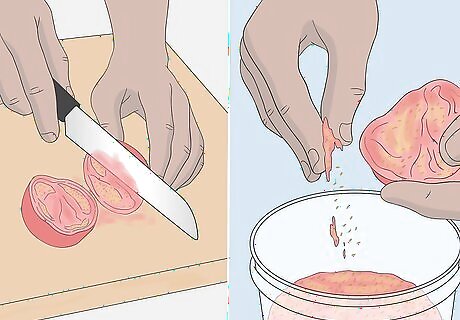
Cut your tomatoes in half and scoop out the insides into a plastic container. You will want a container with a loose-fitting lid as the tomato pulp and seeds will be sitting in the container for a few days. A layer of mold will develop on the seeds. This process can destroy many seed-borne diseases that could affect the next generation of plants.
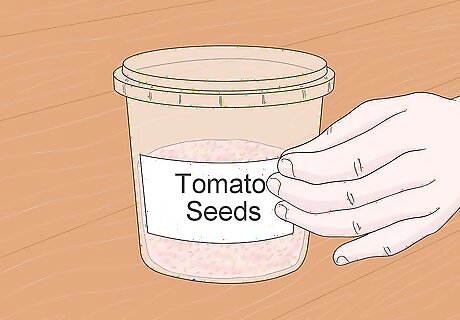
Label your container. If you are fermenting several different types of seeds, be sure to label the container with the correct variety to avoid any mix-ups. Set the lid on top of the container but do not seal it to allow oxygen to reach the pulp.
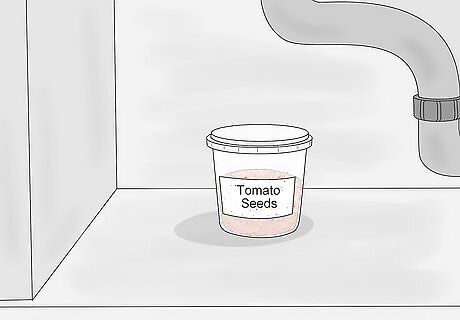
Set the pulp in a warm place out of direct sunlight. The fermenting process can look off-putting and smell unpleasant, so set the container somewhere out of the way. For example, you could place the container under a sink, or in your garage (as long as it is warm enough).
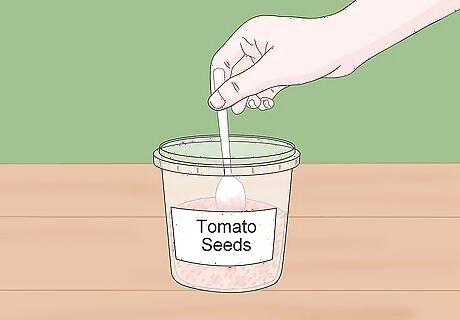
Stir the container daily until a layer of white mold forms on the surface. It usually takes about two to three days for the mold to form. Be sure to harvest the seeds shortly after the mold forms so that the seeds do not germinate in the container.
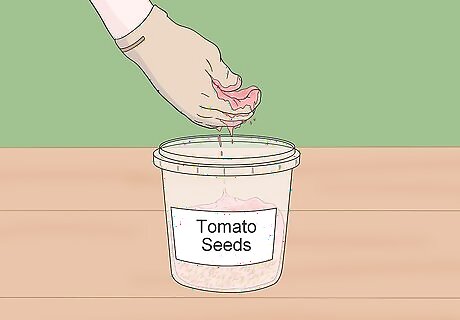
Harvest the seeds. Wearing gloves, scoop off the moldy layer. The seeds will have sunken to the bottom of the container.
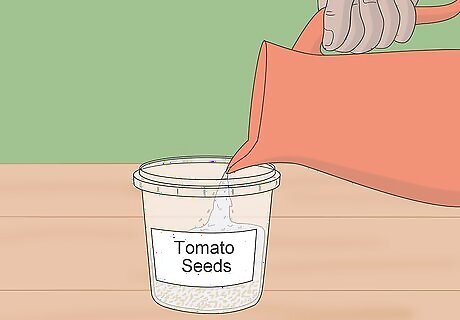
Pour water into the container to dilute the mixture. Let the seeds settle at the bottom and continue to pour off the unwanted parts of the solution over a strainer. Be careful not to throw away the seeds. After you have collected all of the seeds in the strainer, rinse them thoroughly with water.
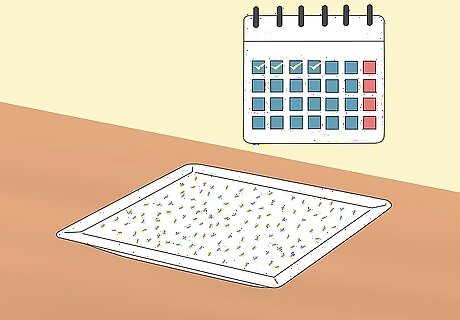
Spread the seeds over a non-stick surface and allow them to dry for several days. A glass or ceramic flat dish, baking sheet, a piece of plywood or a window screen all work well. It can be very difficult to remove dried seeds from paper or cloth. When they are dry, you can package them in a sealed plastic bag until you are ready to plant them. Be sure to label the variety of seeds on the package.
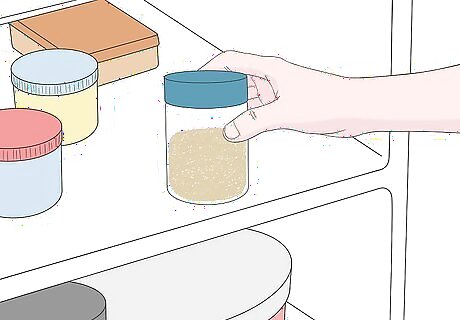
Store the seeds in a cool, dark place. You can also place them in an airtight container in your refrigerator to simulate a winter climate. Do not place the seeds in the freezer, doing so will damage them.
Planting Your Seeds
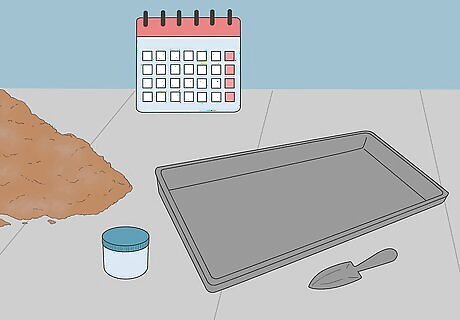
Start tomato plants from seeds indoors 6 to 8 weeks before your last frost. To prepare your tomato plants to be transferred outdoors, start your seedlings indoors while it is still cold outside. Cool temperatures in early spring can stunt growth or even kill young seedlings. Start your seedlings indoors to improve your production chances.
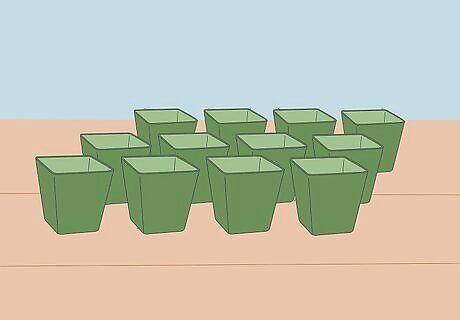
Purchase plastic peat pots or similar small pots for growing seedlings. You can find these pots at your local nursery or garden supply store.
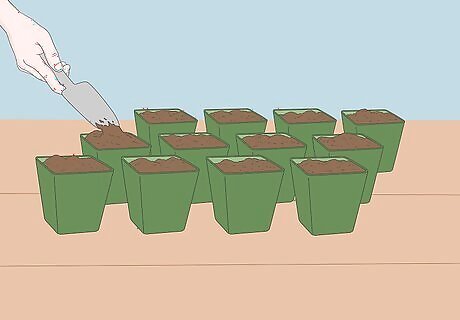
Fill your peat pot with the moistened soil mix of your choice. For example, one mix could be made using 1/3 peat moss, 1/3 coarse vermiculite, and 1/3 compost. Just make sure to water it before you sow your seeds.
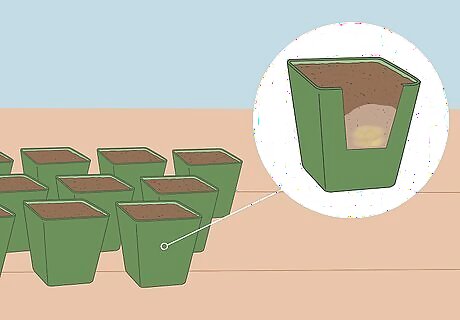
Sow 2 to 3 seeds 1/4-inch deep in soil in each pot. Cover with soil and pat down lightly.
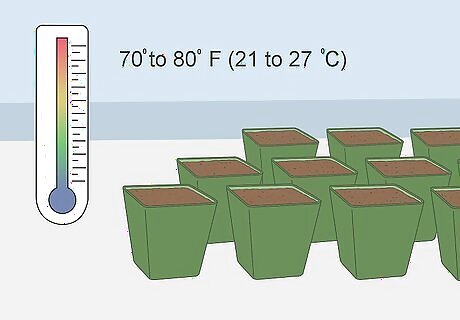
Store the containers in room of 70 to 80 °F (21 to 27 °C) until germination occurs. When the seeds germinate, move them into full sun or under grow lights.
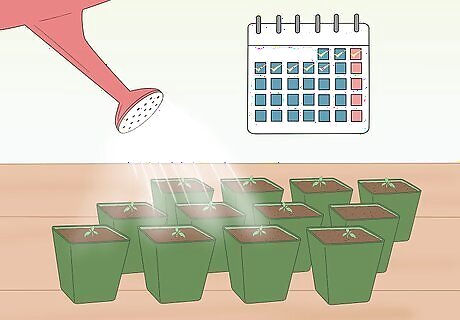
Mist the seeds daily for the first 7 to 10 days. When you start to see sprouts, you can water less frequently. More plants are killed by too much water (that rots the roots) than too little water so water sparingly after the plants sprout. You can also soak the seeds flat in water, so the roots are watered from the bottom up. Misting may not get enough water to the roots.
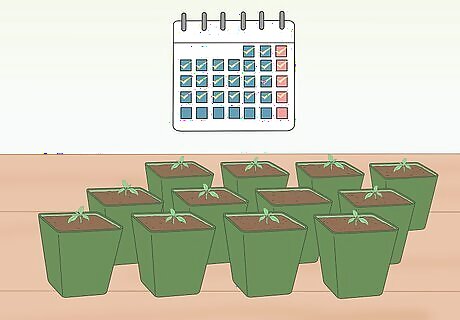
Check your pots every day. Once the plants peek out of the soil, they will grow pretty fast.
Transferring Your Plants
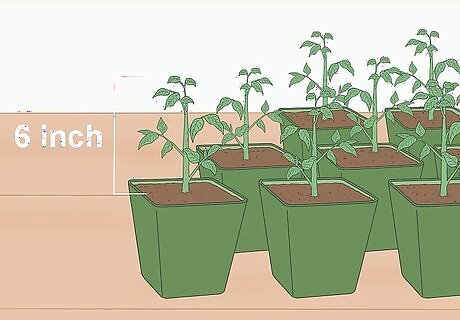
Notice if your plants have grown to at least 6 inches (15.2 cm) high. When there is no danger of frost outdoors and your plant meets the height requirement, they are ready to be transferred outdoors.
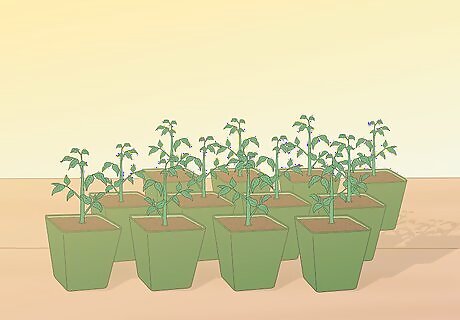
Harden off your plants. About a week before you plan to transfer your plants outdoors, you need to gradually adjust them to outdoor temperatures. Gradually expose the plants to the sun, starting in a partially shaded area and slowly extend the number of hours the plants stay outside each day. Start with an hour or less per day and gradually increase from there.
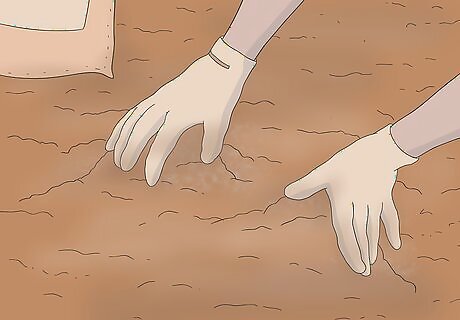
Prepare your garden space. You want to use well-drained soil with a good amount of organic matter present. Consider mixing peat moss into the soil to improve drainage. You can also mix in leaf mold or compost. To use peat moss, remove no more than half of the soil and mix the removed soil with an equal ratio of peat moss. Mix the peat moss/soil mixture back into the planting area.
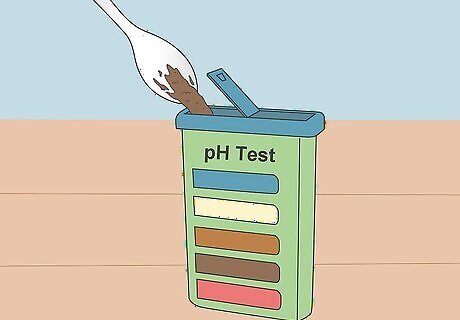
Test the pH level of the soil. Tomatoes grow best when planted in soil with a pH between 6 and 7. Your local agricultural extension office should have soil testing forms, bags and instructions available. After making adjustments to the soil, test its pH level again. If the pH level is below 6, add dolomite lime to the soil to raise the pH level. If the soil pH is above 7, mix in granular sulfur to lower the pH level.
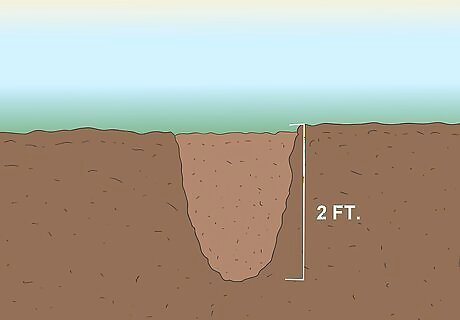
Dig a hole about 2 feet (0.6 m) deep. It needs to be deep enough that you can plant your seedlings and only the top 1/4 of the plant will be sticking out of the ground. Place a scoop of organic matter such as compost into the bottom of the hole. This will give your plant an extra boost, and also help keep the plant from going into shock from transplanting.
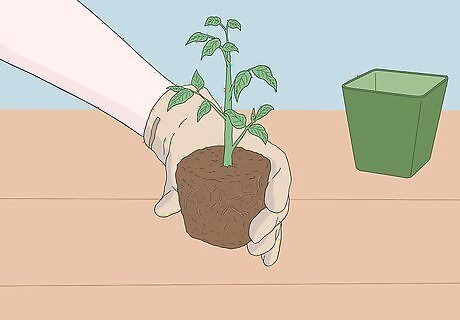
Take the plants out of their pots carefully and place them in the ground. Try not to disturb the roots during the transplanting process. Set the transplants deep enough so that the soil touches the first set of new leaves when you cover the plant with soil. Pat the planted area lightly. Be sure to remove all of the leaves that are at or below soil level. Tomatoes can catch diseases from their leaves making contact with the soil.
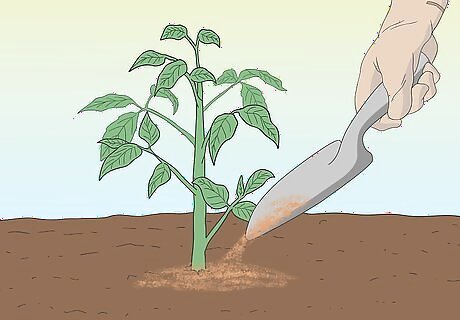
Fertilize the plants. You can fertilize the plants with fishmeal, chicken manure, or a premixed low-nitrogen, or a high-phosphorus organic fertilizer. Then, water the plants thoroughly. You will need to repeat the fertilizing process each month.
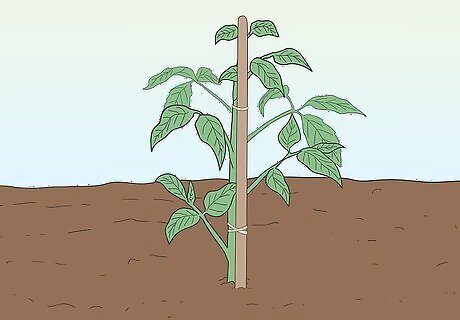
Place stakes or trellises next to the plants. This will give the plants a support to latch onto as they grow and makes it easier to pick the fruit from the vines. Be careful not to disturb the roots.
Growing Your Plants
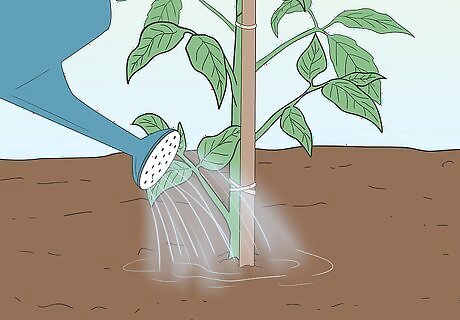
Feed and water your plants often. Water at the base of the plant to avoid developing mildew on the leaves. Sprinkle your plants with liquid seaweed and layer the compost directly on the soil around the plant. Do this weekly to increase fruit production.
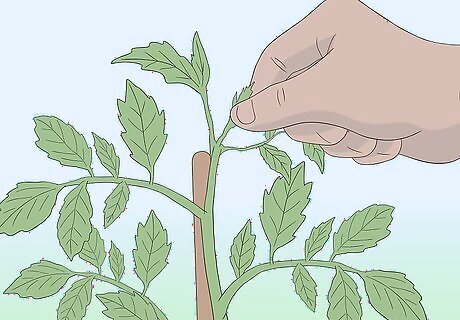
Pluck suckers off of your plants. If you want to promote better growth and a higher fruit yield, pluck the suckers off of your tomato plant using your fingers when they appear. Suckers grow in the crotch between a side stem and the main stalk. Leave a few near the top of the plant to avoid sunscald.
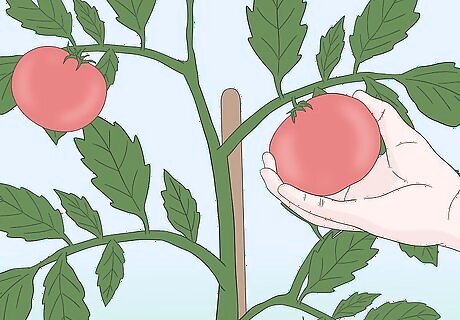
Harvest the fruit at its peak. Fruit should appear about 60 days after transplanting. Check the plants daily once they begin to ripen to ensure peak flavor. Gently twist the fruits and avoid pulling at the vine.




















Comments
0 comment